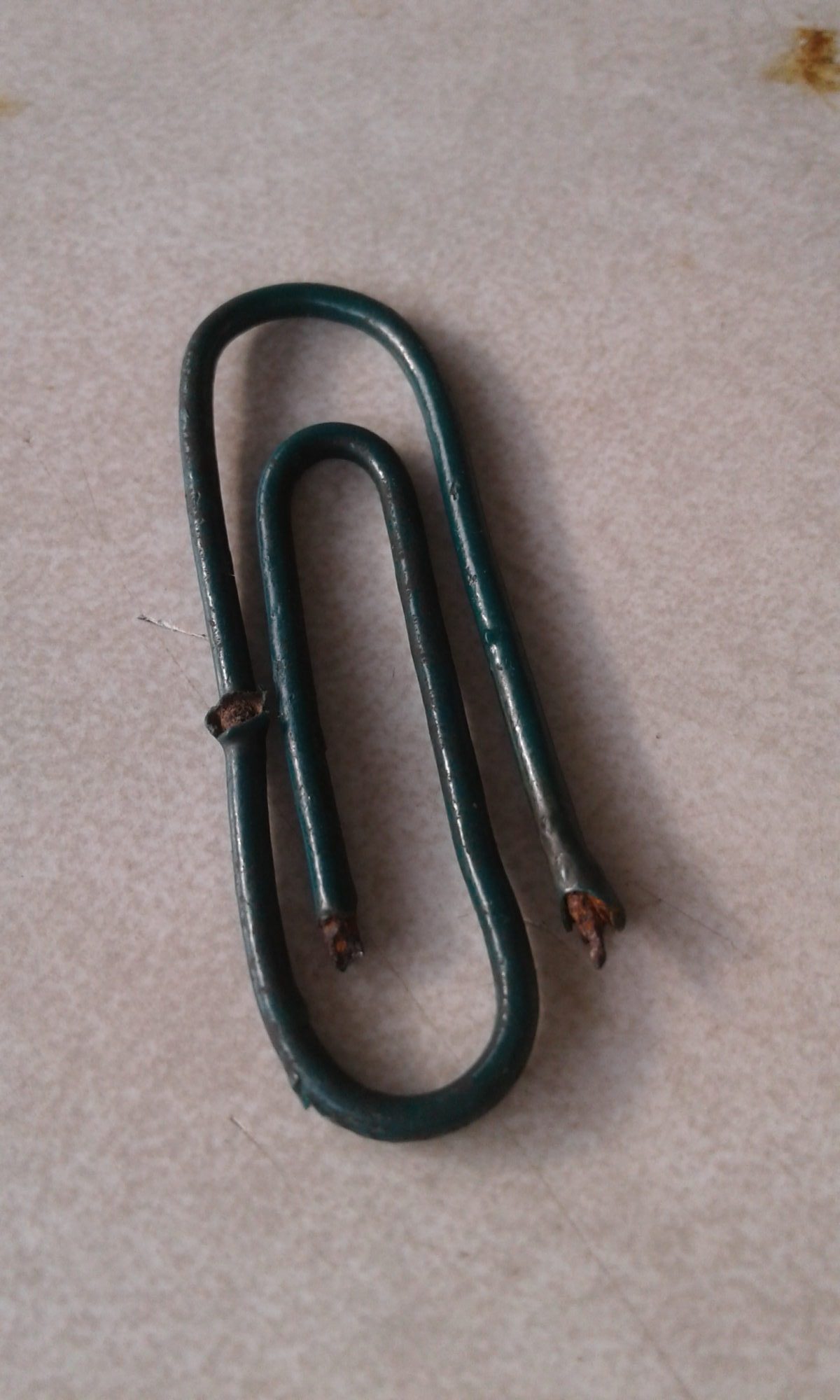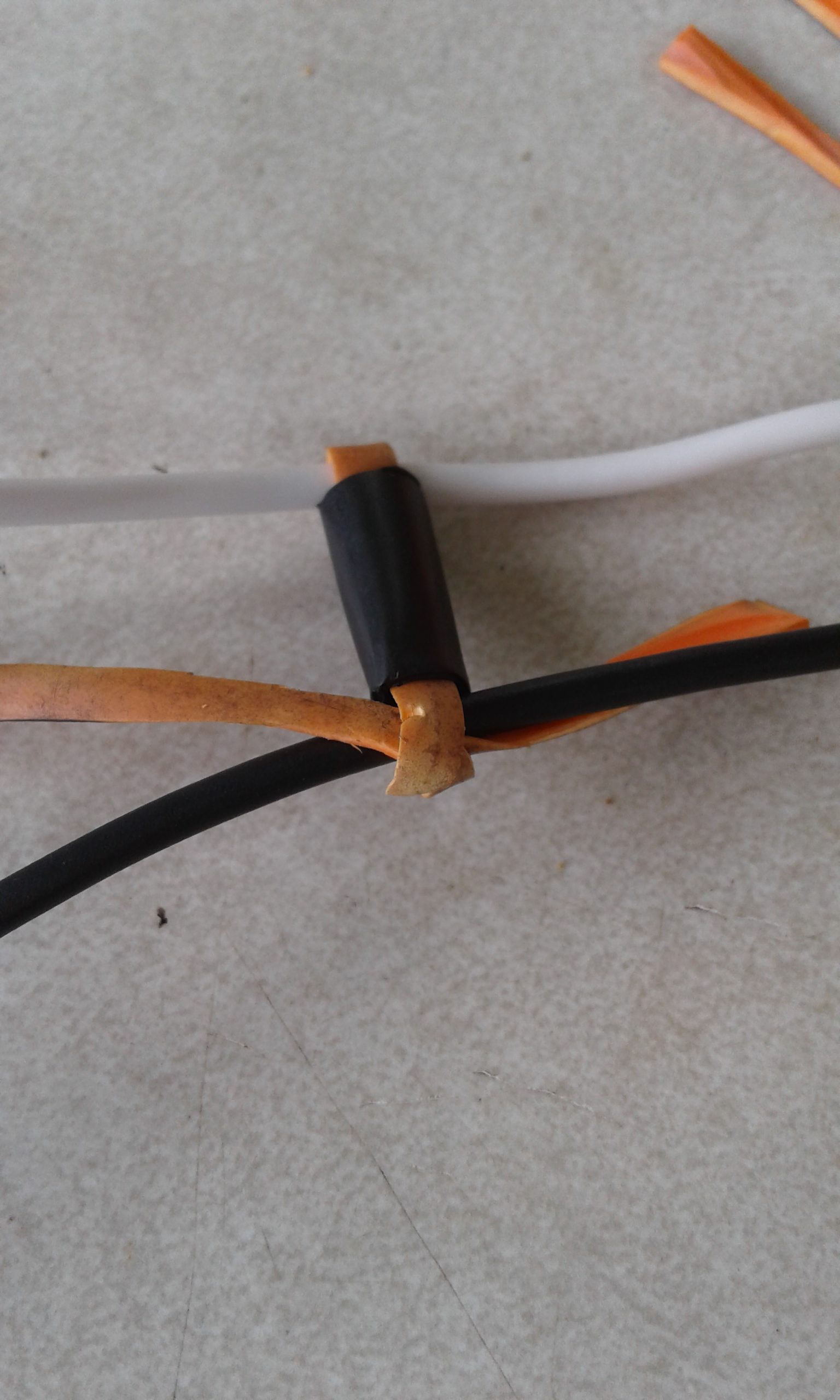While a doublet sometimes refers to a simple dipole, this application adds an additional requirement – balanced feed line. The advantage of a balanced feed is ease of tuning at frequencies higher than the dipole’s resonant frequency. This, in turn, confers an added benefit of additional gain when operating at frequencies for which the dipole’s length is a multiple wavelength. In locations where an antenna farm cannot be built, this design is an acceptable compromise. One disadvantage of the doublet is the requirement of an antenna tuner to match the impedance of the feed line to the radio when changing frequencies.
I recently acquired an old manual antenna tuner and, having learned about the doublet antenna, decided to make an attempt at building it. There was just one catch: I had no balanced line with which to feed the elements! Confident that I could assemble a length of ladder line, I began searching for suitable build components. I then realized there was another catch: the old tuner, a Kenwood AT-200, did not have outputs for balanced line! After some research, bugging other hams, and many cups of coffee, I opted to try adding a current balun between the tuner output and the feed line.
The parcel of land which houses my station was once home to several successive parties of squatters, all of whom left the place a mess with copious amounts of household trash and random junk. To create the feed line, I took a long length of outdoor power extension cable, presumably used by the squatters to steal electricity from the neighbors. I also found an old broadcast AM receiver, from which I extracted a ferrite rod to use in the current balun. At least one party of squatters used the place for clandestine cultivation of contraband flora. Seemingly, a later party used their irrigation lines as rope to bind some framing for their clandestine cultivatory operation. I removed the tubular irrigation line, hoping to use it for spacers in the ladder line.
Taking stock of my available zip ties, I realized I’d have to find some other way to bind the spacers to the feed line. After some failed attempts with twine, I found that the outer insulation of the outdoor extension cable, cut into strips, was suitable enough to keep the spacers in place. I used the few remaining zip ties at the feed point end of the line, but they were probably unecessary. For the balun, I used some speaker wire to wind around the scavenged ferrite rod and connected a little bit of coax to one end in order to pass the line through my shack’s metal wall and connect to the tuner.
After about half a week of leisurely construction, I had nearly 50 feet of ladder line. While this length would not be enough to feed the dipole at the desired point (strung between two large trees), I am impatient boor. I quickly took down my crummy 26 foot VHF mast (made from waiawi sticks lashed together), erected it at a location within the limits of the ladder line, hoisted VA7EEX’s 40m dipole (fed with my ladder line) up to the top, and tied the ends off as high as possible.
While the “derblert” does indeed provide a 1:1 match on the 40-10m bands, its low height led to some less than ideal results. My assumption is that, at 40m, ground attenuation contributed to poor DX performance. On the other hand, NVIS results were no worse than previous antenna installations. On higher bands, the radiation patterns differ, presenting multiple lobes – and, in turn, nulls. Additional consideration to that fact may be needed when orienting the derblert in future installations.
As a first attempt at working with (and fabricating) ladder line, I’d say the results were acceptable and illuminating. Since coaxial cable is expensive and 50 ohm lengths are unavailable locally, I plan to use homemade balanced lines more often in future projects.

On-Air adventures with improvised and (sometimes) field-expedient systems
